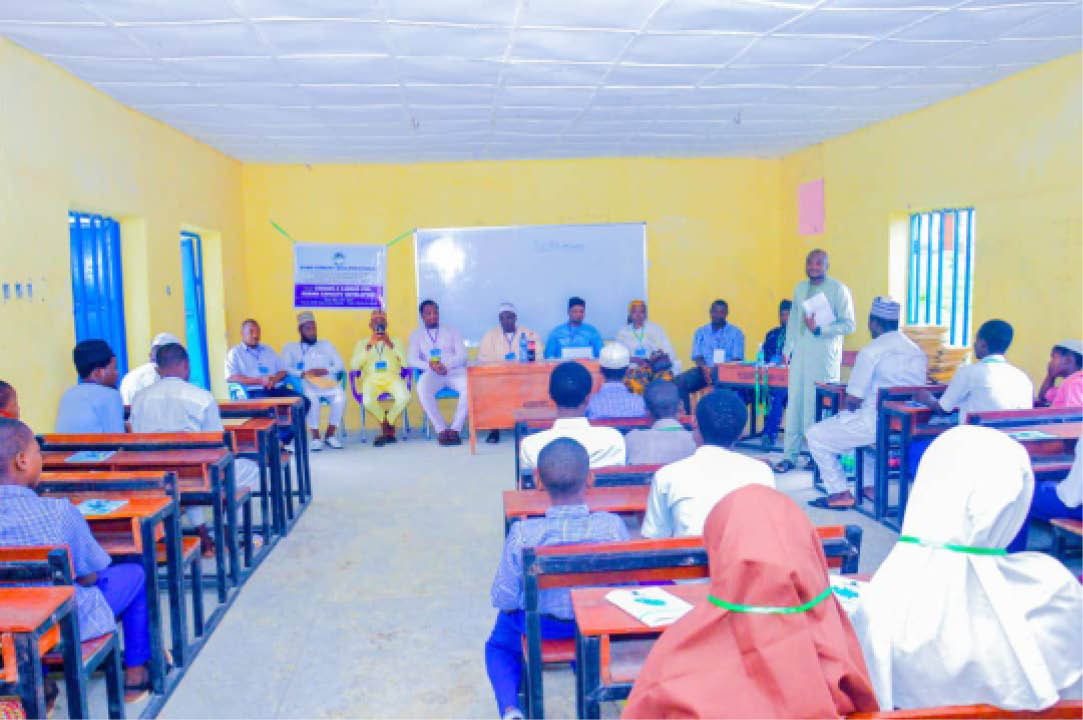Recently a new focus has been placed on the out-of-school children phenomenon in Nigeria by both the media and some stakeholders. A recent UNICEF report which put the number of out-of-school children in Nigeria at 20 million triggered the conversation. Most people are not aware that the new figures are consequent on the rebasing of the benchmark age bracket used from ages 6-11years which is the age of children at basic education levels to 3-18 years.
The latest assessment by UNICEF which puts the figure of out-of-school children (OOSC) to 20 million covers early childhood development education, Primary/Junior secondary, Senior Secondary and early Tertiary Education.
Expectedly the conversation has all been centred around the role of federal government with undue and unwarranted attack on the Minister of Education Mallam Adamu Adamu. It will be wrong to place the burden of out-of-school children entirely on the federal government without much consideration of the central role played by state governments, local governments and even communities in addressing the phenomenon.
The reality of it is that basic education has always been, will always be and should continue to be community driven. In the past especially during the colonial days and the immediate post-colonial era, in many parts of the country, community leaders such as traditional rulers, missionary groups, town unions and associations were the key drivers of ensuring that children of school age are enrolled in schools.
Kwara town celebrates first FG medical project
$1.2m not enough to transport Nigerians from Sudan by road – FG
Under our current system, even though education is on the concurrent legislative list of the constitution, basic education, especially early childhood development education, primary and secondary education are almost exclusively the preserve of state governments and local governments.
However, through the framework of the instrumentality of the Universal Basic Education Commission (UBEC) as an intervention agency, two per cent of the consolidated revenue fund of the federal government is devoted to providing support for basic education across the country.
UBEC does not regulate or determine policy for the state governments and local governments. Activities related to its functions at the state level are carried out by sister agencies called Universal Basic Education Boards (UBEBs).
This, therefore, means that without effective collaboration, coordination and buy-in of the state governments, any desired goal within the education sector including ending the out-of-school children phenomenon cannot be effectively addressed.
It is understandable that laws such as the Universal Basic Education UBE Act of 2004 are applicable nationwide, but many states are known to default in many areas, particularly the provision of marching grants for critical interventions.
For example, by the end of the year 2022, states in the North West geo-political zone of the country were unable to access N7,081,756,391.61 marching grant intervention funds. The North East has N7,684,052,581.34 unclaimed funds, the North Central has N10,451,414,422.25, the South West N8,630,780,422.26, the South East N14,325,933,575.13 and the South-South N4,819,872,190.09.
In spite of this it should be noted that between the year 2018 and 2022 the number of primary schools in Nigeria increased from 113,450 to 131,377. In the case of junior secondary schools, the number jumped from 31,077 to 38,217 within same period.
Enrolment into primary schools rose to 31,771,916 while that of Junior Secondary Schools increased by 8,003,397 students. These are indeed quantum leaps. MDGs No.4 extended the time to achieve universal school enrolment to the year 2030.
Many factors account for the number of out-of-school children in Nigeria. These include uncontrolled population increase without the expansion of educational facilities, the withdrawal of girls for early marriage, the almajiri phenomenon, nomadic pastoralism, migrant fishermen, drop-out rates and insecurity.
The spate of insecurity across the country particularly in the North East where a group declared education as unlawful or “Haram” has been most worrisome. Kidnappings and abductions of students in the North West had made many parents keep their children at home rather than school.
Poverty also deprives parents’ capacity to take on additional burdens required such as transport fares and levies. In order to leave a lasting legacy in the process of addressing the OOSC in the country, the Hon.
The Minister of Education Mallam Adamu Adamu has directed the Universal Basic Education Commission to produce a comprehensive National Framework of Action to reduce out of school children the period 2023 – 2027.
Other steps taken include the introduction of the Integrated Qur’anic and Tsangaya Education, targeted at the integration of the 2,292,339 learners called the almajirai attending 11,404 Islamiyya Tsangaya schools mostly in the North of the country in order to mainstream the “almajiri” learners into the basic education net.
Other ongoing programmes include the Better Education Service Delivery for All (BESDA) which aims to increase equitable access to all children and the Adolescent, Girls Initiative for Learning and Empowerment (AGILE), the National Home-Grown Feeding Programme and the Open Schooling Programme (OSP).
Others are the Girls Second Chance Education Programmes for those earlier withdrawn from school, All Girls Model Schools, Boys Vocational Training Centers and the Special needs Education Programmes for children with special needs.
With all of these efforts it is indeed unfair to say the Federal Ministry of Education is doing nothing to address the out-of-school children phenomenon in Nigeria. Rather efforts should be geared towards addressing the gaps identified at the lower levels of governance (states and local governments) and enhance community acceptance, ownership and active participation in efforts to end OOSC in Nigeria. That is the bottom line.
Sajoh resides in Abuja

 Join Daily Trust WhatsApp Community For Quick Access To News and Happenings Around You.
Join Daily Trust WhatsApp Community For Quick Access To News and Happenings Around You.